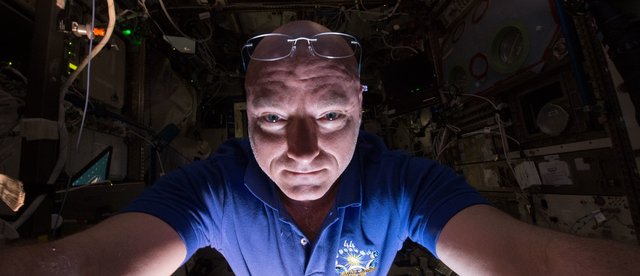NASA sent one of two twin brothers to space for a year. Here's what happened
When NASA astronaut Scott Kelly stood up last March after spending a year in space, he was two inches taller.
Kelly is part of a study NASA is conducting to assess how the human body changes as a result of space travel, using Scott Kelly and his twin brother Mark Kelly as subjects. While Scott spent 340 days aboard the International Space Station, Mark stayed on Earth, giving NASA the rare opportunity to compare two identical sets of DNA — one that has been exposed to the stressors of space, and one that has not.
Temporary additions in height are just one of many alterations the researchers have documented so far. Scott and Mark have the same genes, but Scott's year in space appears to have strongly affected the way those genes are expressed.
"We can observe the entire human biological system responding to space flight," Christopher Mason, a principal investigator on the NASA Twins study and an associate professor at Weill Cornell Medical College, told Business Insider.
Researchers already knew that taking our bodies for a jaunt outside Earth's protective atmosphere has plenty of effects on the human body, like stretching your spine, shrinking your muscles, and messing up your sleep cycle — but the effects of long-term exposure to space have been less well-known.
The results of the twin study, though preliminary, are already giving scientists a ton to think about.
Mason said they've seen "thousands and thousands of genes change how they are turned on and turned off," almost immediately once an astronaut reaches space. Some of these changes stick around for days or even weeks after astronauts return to Earth.
The new findings about gene expression build on some preliminary results that NASA released in February. Researchers hope to use the full set of data, which could take some time to comb through completely, to better prepare for future deep-space missions.
Here are some of the most interesting results so far:
Scott's telomeres got longer, then shrunk back to normal. Scott's telomeres, or the caps at the end of chromosomes, became longer than his brother's while he was in space, but quickly returned to their normal length once he returned home."That is exactly the opposite of what we thought,” Susan Bailey, a radiation biologist at Colorado State University in Fort Collins, told Nature in Februrary. That's because shorter telomeres are generally associated with getting older. Scientists are still studying what this means, but it could be linked to more exercise and eating fewer calories while in space, according to NASA.
Scott's genetic expression changed in a bunch of ways. Scott's genes showed both increased and decreased levels of methylation, a process that results in genes getting turned on and off. “Some of the most exciting things that we’ve seen from looking at gene expression in space is that we really see an explosion, like fireworks taking off, as soon as the human body gets into space,” Mason said in a recent statement. According to NASA, this could "indicate genes that are more sensitive to a changing environment whether on Earth or in space."
The twins hosted different gut bacteria. Researchers noted differences between Scott's and Mark's gut bacteria (essentially the microbes that aid in digestion) throughout the year-long study. This was probably a result of their different diets and environments, NASA said.
Scientists are looking for what they're calling a "space gene." By sequencing the RNA in the twins' white blood cells, researchers found more than 200,000 RNA molecules that were expressed differently between the brothers. It is normal for twins to have unique mutations in their genome, but scientists are "looking closer to see if a 'space gene' could have been activated while Scott was in space," NASA said.
